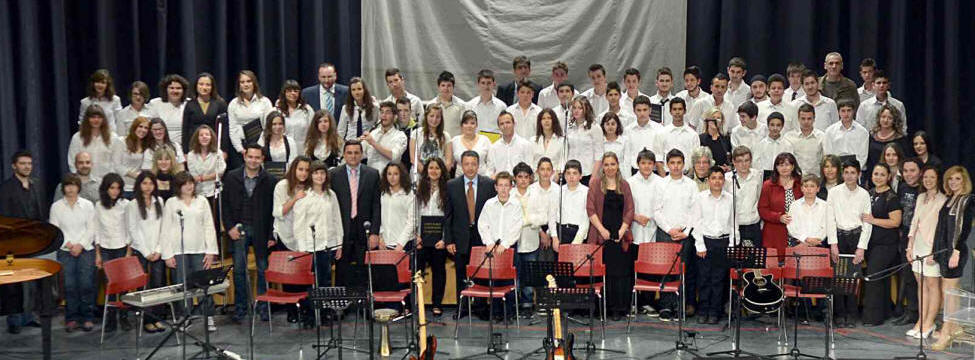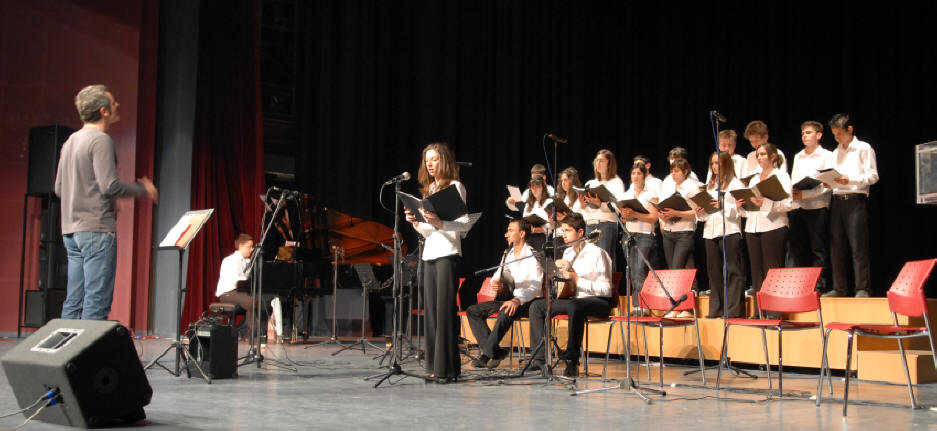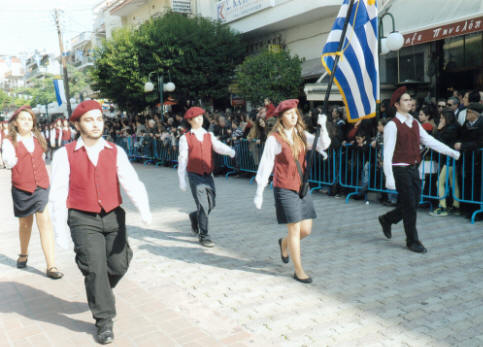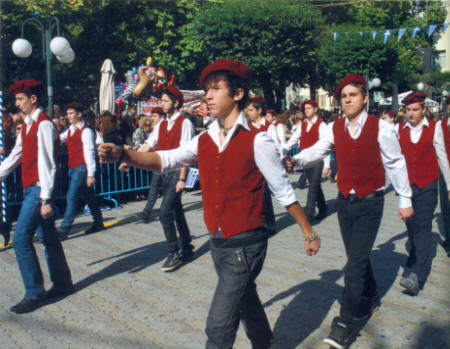MUSIC SCHOOL OF
GIANNITSA
A.
ESTABLISHMENT AND
OPERATION OF THE MUSIC SCHOOLS
Throughout Greece there are 28 music schools for grades 7 to 12. The aim of the
music schools (gymnasiums and lyceums) is the preparation and training of young
people who wish to become professionals in music without leaving aside general
education, in the case they decide to choose another field of scientific or
professional expression.

The curriculum includes courses in music education, (emphasis is given on Greek
traditional instruments such as the kanonaki, tambura), in aesthetic education,
workshops, labs and evening study. Music courses may be taught collectively or
individually (on a one-to-one basis). There are courses like Byzantine music,
history of music and harmony which are taught as classroom subjects.
Music high schools can organize courses of music education, for primary school
pupils for the detection of talents and interests in music.
Usually, schools form choral groups and orchestras that perform in various
occasions and celebrations of the school and the community life. They often take
part in concerts and competitions.
B.
ADMISSION OF STUDENTS IN THE 1ST GRADE OF THE MUSIC SCHOOL
Music Schools accept graduates of primary schools, after selection, in the 1st
grade of junior high school. The selection process takes place in the period
from 15 to 30 June each school year and in exceptional cases during the period
from 1 to September 11 of each school year.

The number of students who will attend the 1st grade is determined
by the Director of the Music School and the Art Commission guidelines. The final
decision is taken by the Secretary for Primary and Secondary Education of the
Ministry of Education and Lifelong Learning.
The criteria determining the number of students are: the infrastructure
of the school, the permanent teaching staff, the number of candidates, the
possibility of hiring substitutes and hourly-paid teachers.
Candidates who wish to enroll in the Music School are evaluated in:
·
Rhythm,
·
Acoustic
capacity
·
Voice capacity
·
Playing a musical instrument (optional) European or traditional.

C. COURSES
1.
MUSIC HIGH SCHOOL
The music education
courses are divided into two groups:
|
Group A |
Group B |
|
Theory and Practice of
European Music |
Choir |
|
Greek Traditional Music |
Ensembles
|
|
Musical instrument (on
a one-to-one basis) |
Piano (compulsory)
Tambura (compulsory) |
2. MUSIC
LYCEUM
The music education
courses are divided into:
|
Primary
|
Secondary |
|
Harmony
Writing on dictation -
Music Reading
Greek Traditional Music
Musical instrument
(classical/traditional)
|
Piano (compulsory) – for
the first grade
History of Music
Morphology
(Analysis, form and
structure)
Ensembles |


Contact details


